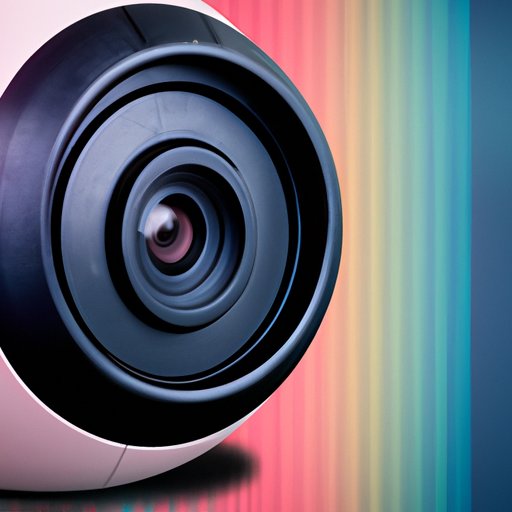
I. Introduction
Hidden cameras are a growing concern, as technology has made it easier to hide cameras in everyday objects, making them difficult to detect. In this article, we will explore the different approaches to detecting hidden cameras, providing readers with practical tips for protecting their privacy.
II. Understanding the types of hidden cameras and where they are commonly found
There are different types of hidden cameras, including those disguised as everyday objects, such as USB cables or alarm clocks, and those hidden in vents or ceiling tiles. They can be found in public restrooms, hotel rooms, or changing rooms. It’s important to be aware of the types of hidden cameras and where they might be located.
III. Using a hidden camera detector
Using a hidden camera detector can help you locate hidden cameras in your home or work office. The detector emits a radio signal that can detect the presence of a camera, even if it is turned off. It is a useful tool, but has its limitations due to the varying range and sensitivity of different models. Consider purchasing a detector only if you have reason to believe there may be a camera present.
While there are many different types of detectors available, choose a reputable brand, such as SpyFinder, KJB Security, or Lawmate. You can buy them at online retailers such as Amazon or at security equipment supply stores.
To use a detector, it’s important to turn off all devices in the room to avoid interference. Scan the area slowly and systematically, paying attention to any signals indicating a hidden camera’s location.
IV. Conducting a physical search
Conducting a physical search of an area can also be an effective way of detecting hidden cameras. Start by examining the room’s most vulnerable areas, such as electrical outlets, picture frames, or decorations. Check for wires that are not consistent with the room’s décor. Look for out-of-place objects that may be hiding a camera.
When conducting a physical search, it’s essential to be methodical and double-check each area to ensure that no stone is left unturned. Have a checklist on hand to ensure that you are checking all potential locations in the room.
V. Checking for unusual sounds
Unusual sounds may indicate the presence of a hidden camera. The camera’s motor or electronic transmission can generate a low humming noise, or a clicking sound when the camera’s power is turned on. It can be challenging to detect such sounds without specialized equipment, making a phone app that detects high-frequency sound a useful tool. They can detect subtle audio signals and alert you to any potential problems.
VI. Using a flashlight to check for reflection
Flashlights can pick up light reflecting off a camera’s lens. The use of a flashlight helps you to view hidden cameras in items, such as picture frames or plants. Sweep the torchlight across the area slowly, observing any surfaces that may be reflecting light back to you.
VII. Seeking professional help
If you have exhausted all means of detecting hidden cameras and still feel that one may be present, consider seeking professional help. Private investigators and security experts have sophisticated equipment that can detect hidden cameras, while also providing an expert eye for seemingly insignificant details in rooms that you might have overlooked.
When choosing professional help, it’s important to select someone reputable and reliable. A licensed private investigator or security expert should have references and a history of successful work.
VIII. Conclusion
Detecting hidden cameras can be a challenging task, but it’s crucial to protect your privacy. The best way to detect hidden cameras is through a combination of methods, including using a detector, conducting a physical search, and checking for unusual sounds and reflections. Seeking professional help is also an option to consider. Remember, the most important step in protecting your privacy is to stay vigilant and aware.




